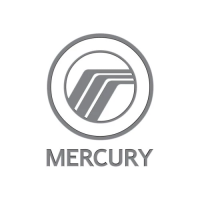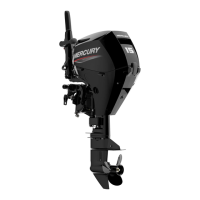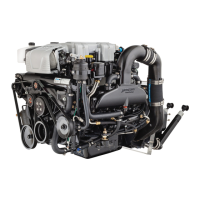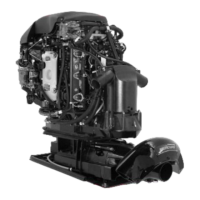POWERHEAD
90-884294 OCTOBER 2001 Page 4A-49
3. Measure cylinder bore diameter (with a snap gauge micrometer) of each cylinder, as
shown below. Check for tapered, out-of-round (egg-shaped) and oversize bore.
52324
200/225/250 Models
Model
Cylinder Block Finish Hone
200/225/250 3.6265 in. (92.1131 mm)
0.015 in. (0.38 mm) Oversize 3.6415 in. (92.4941 mm)
0.030 in. (0.76 mm) Oversize 3.6565 in. (92.8751 mm)
4. If a cylinder bore is tapered, out-of-round or worn more than 0.003 in. (0.076 mm) from
standard “Cylinder Block Finish Hone” diameter (refer to chart, preceding), it will be nec-
essary to re-bore that cylinder(s) to 0.015 in. (0.381 mm) oversize 0.030 in. (0.762 mm)
oversize and install oversize piston(s) and piston rings during reassembly.
NOTE : The weight of an oversize piston is approximately the same as a standard size pis-
ton; therefore, it is not necessary to re-bore all cylinders in a block just because one cylinder
requires re-boring.
5. After honing and thoroughly cleaning cylinder bores, apply light oil to cylinder walls to
prevent rusting .
Pistons and Piston Rings
IMPORTANT: If engine was submerged while engine was running, piston pin and/or
connecting rod may be bent. If piston pin is bent, piston must be replaced. (Piston
pins are not sold separately because of matched fit into piston.) If piston pin is bent,
connecting rod must be checked for straightness (refer to “Connecting Rods,” fol-
lowing, for checking straightness).
1. Inspect pistons for scoring and excessive piston skirt wear.
2. Check tightness of piston ring locating pins. Locating pins must be tight.
3. Thoroughly clean pistons. Carefully remove carbon deposits from pistons, with a soft
wire brush or carbon remove solution. Do not burr or round off machined edges.
Inspect piston ring grooves for wear and carbon accumulation. If necessary, scrape carbon
from piston ring grooves being careful not to scratch sides of grooves. Refer to proce-
dure following for cleaning piston ring grooves.

